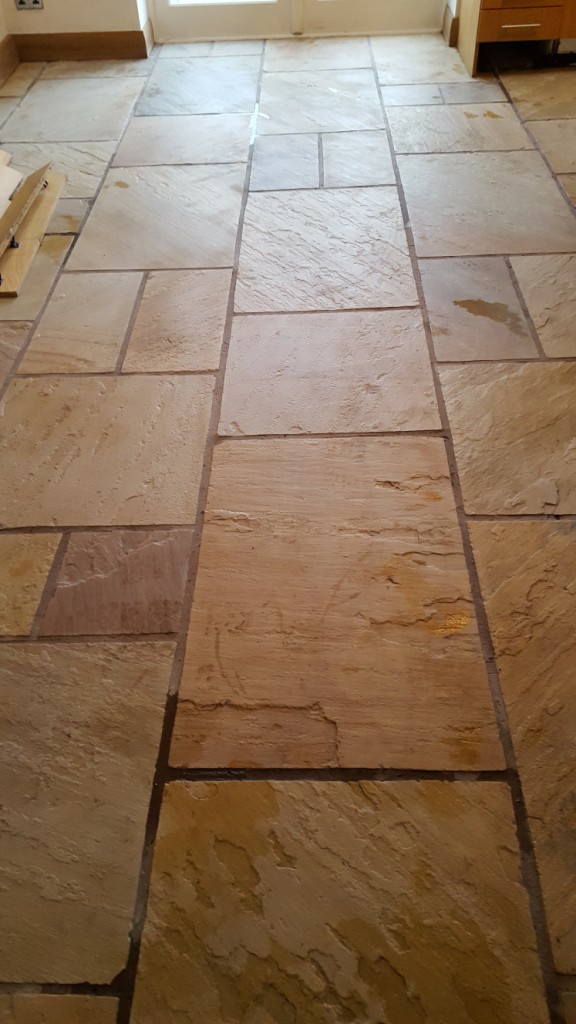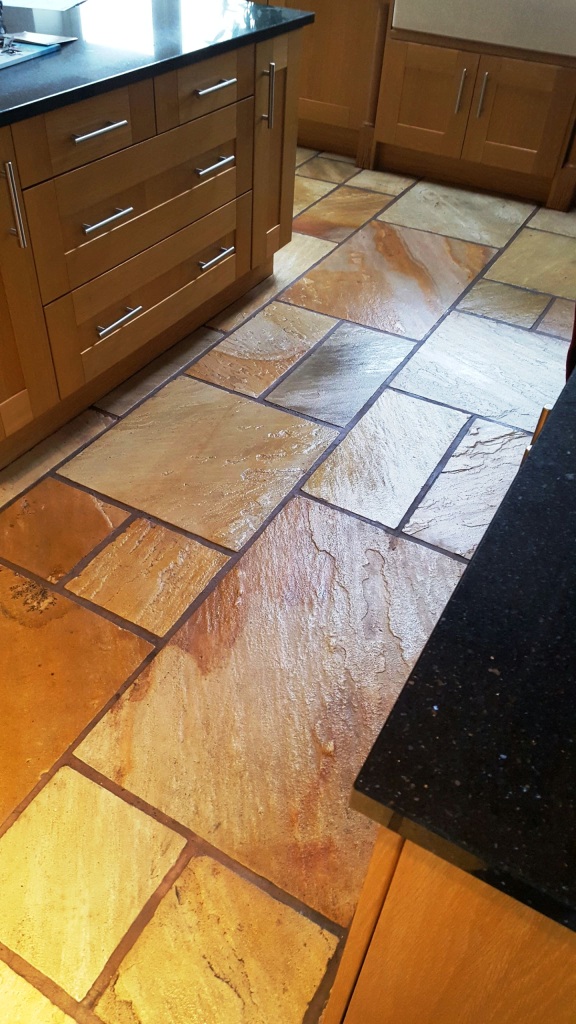Bramhall is an affluent area of East Cheshire and home to some truly fantastic properties with equally impressive floors. I recently had the pleasure of visiting one of these properties to attend to a Sandstone tiled kitchen that was looking past its best.
Sandstone has been used as a building material since ancient times, with some famous examples of Sandstone architecture being the Strasbourg Cathedral in Strasbourg, France, and Angkor Wat in Cambodia.
Of course, Sandstone is also commonly used for paving and tiled floors. It is typically very porous, meaning that dirt and stains can easily become ingrained if the stone is not taken care of correctly. The wonderful natural shades in the Sandstone quickly lose their character and, as was the case with this floor, the tiles become dull and unappealing.
 |
 |
Cleaning Dirty and Dull Sandstone Kitchen Tiles
To clean this floor, I first mixed a strong dilution of Tile Doctor Remove and Go, which is multi-purpose stripper and cleaner. The product strips away any old sealer on the tiles and draws out ingrained dirt, stains and heavy grease build-up. It always provides consistent results and it can be used it on all kinds of tile, stone and grout to great effect.
I applied the product and left it to soak for roughly 20 minutes to allow time to penetrate the pores of the stone and reach the deeply embedded dirt. Next, I scrubbed the floor using a specialised buffing machine fitted with a black scrubbing pad to get the stone clean. The resulting dirty cleaning slurry was quickly soaked up using a wet vacuum and after rinsing with water I used the wet vacuum again to get the floor as dry as possible before leaving for the day and allowing the floor to dry off fully overnight.

Sealing Sandstone Kitchen Tiles
Upon returning to the property the following day, I tested the floor with a damp meter, checking for any excess moisture that could prevent me from sealing the stone.
Thankfully the floor proved dry and I could seal the floor using two different types of sealer. First, I applied a coat of Tile Doctor Colour Grow, which is an impregnating sealer designed to fill the pores of the tiles to block ingrained dirt, as well as to enhance the natural colours in the stone.
By itself, Colour Grow provides a natural-looking matte finish, but in this instance the customer had requested a low-sheen finish, so I also applied Tile Doctor Seal and Go. Seal and Go is a water-based acrylic sealer which provides both a stain resistant surface seal and a durable low-sheen finish.
 |
 |
Looking at the before and after photos, you can see the floor underwent a real transformation. The deep clean really restored the condition of the Sandstone, while the addition of robust sealers will ensure that it is easy for the customer to keep clean in the long term. Needless to say, the customer was really pleased with the result!
Source: Sandstone Tile Cleaning and Restoration in Cheshire